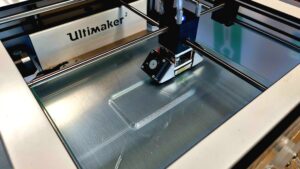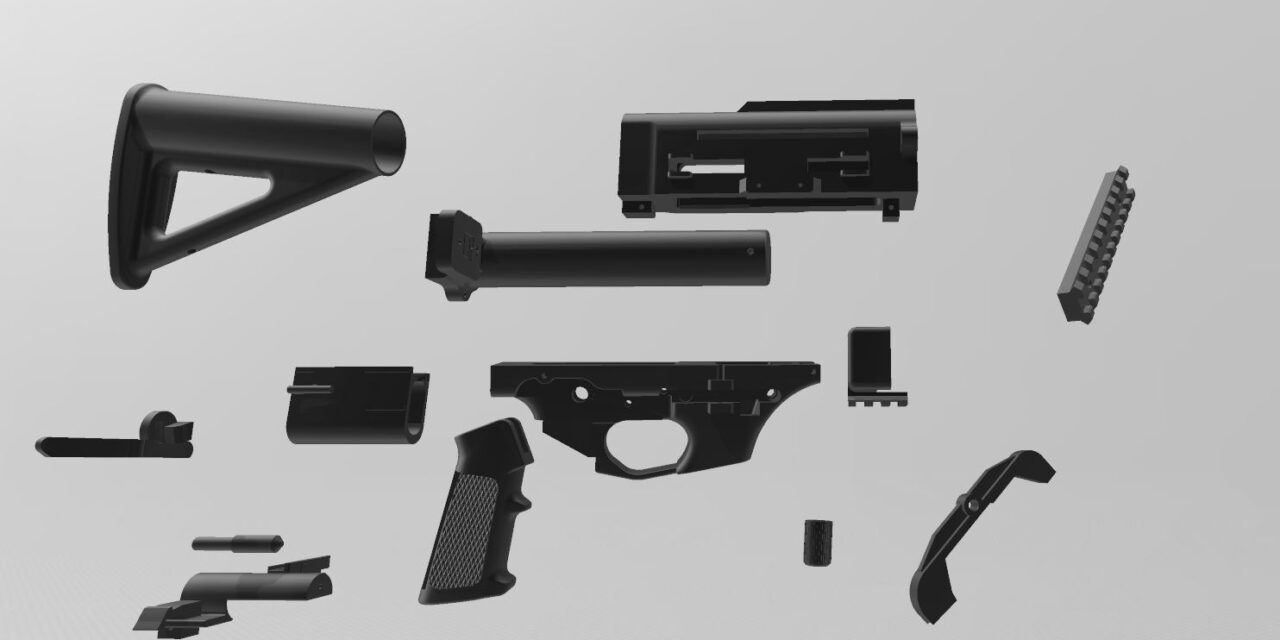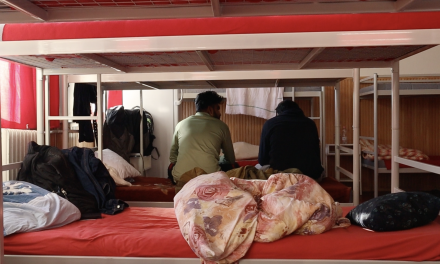Gun ownership is still limited by law in a lot of European countries. Getting your hands on a gun without connections in the criminal underworld has been nearly impossible, until recently. With just a little bit of time, money, a 3D-printer, and the internet, it’s possible for every gun nut to start manufacturing a working firearm from the comfort of their own bedroom. Both national and international police entities have raised the alarm concerning a rise in 3D-printed guns.
The first almost fully 3D-printed gun got designed and produced back in 2013, it was made up of 15 plastic parts and a metal nail that served as a firing pin. It was called “The Liberator” and marked the start of a digital arms race to develop and build reliable, lethal guns accessible to everyone. Now nearly 10 years later the amount of different designs has multiplied. Varying from single-shot fully plastic handguns to semi-automatic firearms with metal parts.
Weapon amateurs
Most of these blueprints are easily accessible on the internet. In forums and chatrooms design tips are shared and spread around. Even on YouTube, there are countless tutorial video’s on printing, building, and even drilling a functional gun barrel. “There is a lot of interest by weapons amateurs who try to build their own weapons, but without any criminal or terrorist purpose in mind,” says Ina Mihaylova, senior press officer at Europol. “There is, however, also an illegal market for parts, weapons and building plans for individuals with criminal or terrorist intentions.”

Most commercial 3D printers are more than capable of printing weapon parts.
Today 3D-printed guns fall into one of three categories. Fully 3D-printed, hybrid 3D-printed, and parts kit completions. The latter is made up of mostly metal parts, using only plastic for the frame and grip. Fully 3D-printed firearms, like The Liberator, usually malfunction after a couple of shots. “3D-printed firearms entirely made out of plastics usually cannot resist the pressure from live firing ammunition,” says Mihaylova. “We believe at the moment the 3D-printing technology is mostly used to produce parts like the frame, which are then combined with metal parts rather than 3D-printing the entire weapon.”
F*ck Gun Control
This combination of plastic and metal parts is known as a hybrid 3D-printed firearm. The most popular example of a hybrid firearm is the FGC-9, which stands for F*ck Gun Control-9mm. Mihaylova says: “The 3D-printed plastic components are being incorporated with metal parts like the barrel, chamber or firing pin.” This results in a somewhat reliable, semi-automatic firearm.
In 2021 two big 3D-printing gun workshops got raided by the police in Europe. One in Spain and one in the Netherlands. During the raid in the Netherlands, the police found nine 3D-printers that were busy printing weapon parts. They also found dozens of already printed parts next to sets of metal barrels and springs.
Mihaylova says that Europol is watching the current developments closely. “Producing a complete 3D-printed firearm is still challenging compared to the traditional firearm manufacturing in terms of quality,” she says. “The rapidly evolving advanced technology may cause this to emerge as a more significant threat in the near future.”




